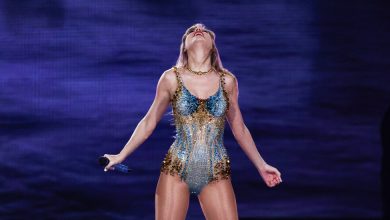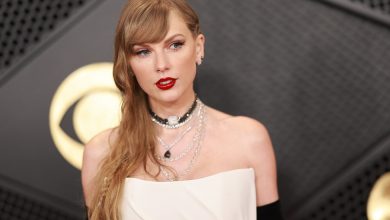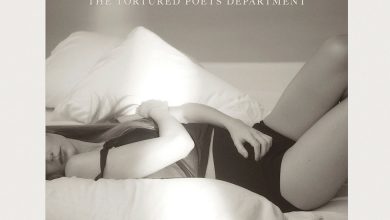Review: A Skilled Ballet Leader Creates a Messy ‘Raymonda’

LONDON — Esteemed ballerina. Experienced artistic director. Skilled fund-raiser. In Tamara Rojo, who was announced last week as San Francisco Ballet’s next leader, American dance has tapped a woman of many talents. Still, the San Francisco company may want to hold off on adding choreography to her list of duties.
On Tuesday, at the London Coliseum, Rojo unveiled her final major project for English National Ballet, the ensemble she has led for 10 years, and her first as a choreographer and stage director: a reworking of Marius Petipa’s 1898 ballet “Raymonda,” set during the Crusades. Unlike “Swan Lake” or “Sleeping Beauty,” it has been a work of niche appeal in Britain and the United States, mainly performed in Russia and in France, where Rudolf Nureyev’s version has endured. (Dutch National Ballet will also tackle “Raymonda” later this season.)
English National Ballet’s “Raymonda” is the first full production of the ballet by a British company, and Rojo, who relocated the plot to 19th-century Crimea and Britain, tries very hard to make it all things to all people — at the expense of integrity.
Raymonda, formerly a French countess, has been refashioned as a young English nurse serving during the Crimean War (1853 to 1856). Her beau, Jean de Brienne, is a soldier instead of a knight and is now called John de Bryan. The duo’s romantic connection is thwarted by a prince from the allied Ottoman Empire, Abdur Rahman (an irresistible Jeffrey Cirio on opening night), a less offensive successor to Petipa’s menacing Saracen knight, Abderakhman.
The urge to tie the plot to Britain and to fix its Orientalist aspects is understandable, but Rojo’s “Raymonda” pulls in too many directions at once to cohere. One minute, it is a 20th-century romantic drama; the next, it goes back to the 1898 original, with reconstructed set pieces. It also nods to Soviet-era alterations and to other Petipa ballets, while including reimagined character dances by Vadim Sirotin. It is impossible to keep track, and worse, the constant tonal changes are treated as unimportant, as if style made no difference to the audience.
This is a problem. The stakes in the 1898 version were primarily poetic and stylistic. “Raymonda” showcased Petipa’s mature craft at the tail end of his half-century reign over Russia’s Imperial troupe in St. Petersburg, now the Mariinsky Ballet, with especially exquisite solos for the leading women. Love featured only as a courtly ideal: The characters were near-abstract types, rather than detailed personas.
Rojo’s 21st-century version, by comparison, gives us a deeply uninteresting love triangle. It’s impossible to believe in Raymonda, John and Abdur as people with personalities and relatable struggles: “Raymonda” isn’t built to reveal them, no matter how much cutting and pasting Rojo and her musical team, Gavin Sutherland and Lars Payne, have attempted with Alexander Glazunov’s delightful score. The choreographic motifs Rojo introduces to paint inner conflict — Raymonda’s joined fists behind her back and crossed arms in front, her constant tugging with John — feel superficial, rather than organic.
They also add to the sheer confusion over the kind of ballet Rojo’s “Raymonda” wants to be. The first act takes place mainly at a military camp outside Sevastopol. It teems with busy characters straight out of the playbook of the British choreographer Kenneth MacMillan, who insisted on individuality even for background players. There are also multiple nods to his 1960s contemporary John Cranko, with Raymonda falling asleep, dreaming and being carried aloft much in the way Tatiana is in Cranko’s “Onegin.”
Rojo stitches this together with attempts at 19th-century authenticity. To reconstruct Petipa’s original ballets, which have been altered over time, the dance world has increasing returned to manuscripts in which Petipa’s steps were recorded around the time his St. Petersburg tenure ended. Rojo asked a notation specialist, Doug Fullington, to help, but has kept little beyond the women’s variations. These are also sometimes given to different characters than in Petipa’s instructions, or subtly altered.
There are also nods to another Petipa ballet, “La Bayadère,” most notably in the beautifully realized first act “Vision” scene: an episode that feels like a tribute to Florence Nightingale, one of Rojo’s inspirations. Nightingale, a British nurse organizer during the Crimean War whose likeness appears on 10-pound notes, was known as the Lady with the Lamp, and the nurses in Rojo’s “Raymonda” carry lamps through darkness, too. Yet more often than not, war is a distant background, barely hinted at.
While on the surface Raymonda has greater agency than in Petipa’s original, she comes out an inconsistent character. Even after she is married (in a depressing wedding dress that obscures the choreography) she continues to hesitate between John and Abdur, who hijack one of the ballet’s great moments: Raymonda’s pensive yet authoritative “claque” variation in the final act, which closes out her symbolic arc.
On opening night, Shiori Kase, a calm and careful performer, portrayed Raymonda as timid and unsure of her choices until the very end, when she leaves her own wedding to go back to nursing — an incongruous development, wrapped up in under a minute.
Rojo’s “Raymonda” is by no means an outlier in the international ballet repertoire: It is only the latest production in a sea of half-updated, tangled versions of the few surviving 19th-century ballets. Total reimaginings can work, as Akram Khan’s “Giselle,” one of Rojo’s commissioning successes, showed, but a serious art form should set higher standards of coherence for the versions it presents of classics. San Francisco will certainly hope for better.
Raymonda
Through Jan. 23 at the London Coliseum; ballet.org.uk



